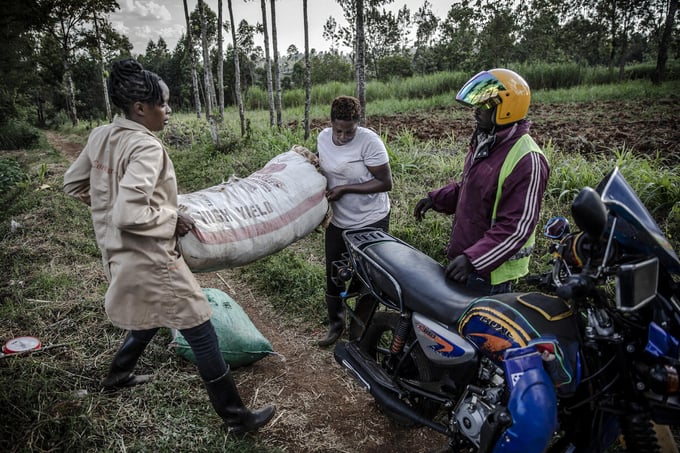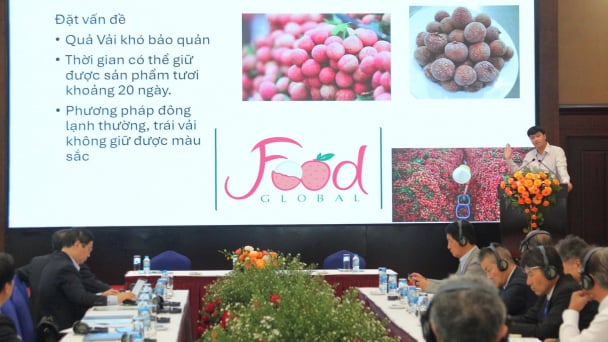June 15, 2025 | 05:16 GMT +7
June 15, 2025 | 05:16 GMT +7
Hotline: 0913.378.918
June 15, 2025 | 05:16 GMT +7
Hotline: 0913.378.918

A FAO-trained youth at work in Kenya.
Policy makers, researchers and the public have a new resource to gauge the scale and importance of agrifood systems in providing employment around the world.
The Food and Agriculture Organization of the United Nations (FAO) has launched five new indicators and overhauled the data available on its FAOSTAT portal, the global go-to resource for those interested in agrifood facts and rural livelihoods.
The expanded data domain now provides, at the country, regional and global levels, information on 23 indicators ranging from employment in agrifood systems, status in employment, divisions of agriculture and hours worked of the people employed in agriculture, forestry and fishing and in rural areas by sex and age whenever possible. Key indicators refer to agricultural and non-agricultural employment in agrifood systems and break down data by age groups, sex and sectors of agriculture including forestry and logging and fishing and aquaculture as well as hunting and crop and animal production.
“The expanded FAOSTAT responds to a critical need to improve the availability of employment data to inform the transformation of agrifood systems. It offers a better picture of how many people are working in agrifood systems around the world and highlights their key role in feeding the planet,” said José Rosero Moncayo, Chief Statistician and Director, FAO Statistics Division.
The new FAOSTAT offering gives useful insights on what is the world’s largest labor sector, employing close to 1.3 billion people, or 39.2 percent of the global work force. It also sets the stage for more detailed monitoring of trends at a local level going forward.
Some takeaways
The global share of employment in agrifood systems (AFS) has decreased significantly, from 52.2 percent in 2000 to 39.2 percent in 2021, indicating a major shift towards other sectors over the past two decades.
Africa leads with 64.5 percent of employment in AFS, highlighting a strong reliance on agrifood systems. Asia follows with 41.5 percent, reflecting both agrarian economies alongside growing industrialization. The Americas hold a 22.4 percent share in total employment, followed by Oceania at 18.7 percent, and Europe at 14.7 percent, indicating more diversified economies with a lower reliance on AFS employment.Asia recorded the highest number of people – 830 million people - working in agrifood systems, with China and India accounting for nearly 60 percent of such employment.
Africa followed with an estimated 300 million people. The two continents combined account for 88 percent of global employment in agrifood systems.
Globally, the agricultural sector makes up 67.5 percent of agrifood system employment, though regional differences are substantial. In the Americas, Europe, and Oceania, much of agrifood employment centers on off-farm activities like food processing, services, trade, transportation, and non-food agricultural manufacturing.
By contrast, Africa and Asia primarily rely on farming for agrifood jobs. Agricultural employment within agrifood systems ranges from 74.4 percent in Africa to just 34.8 percent in Europe.
Non-agricultural employment in agrifood systems (AFS) has remained stable at around 13 percent of total global employment over the past two decades, with Africa as the only region experiencing growth in this sector.
In 2021, non-agricultural AFS employment reached 16.5 percent in Africa, followed by the Americas at 12.8 percent, Asia at 12.4 percent, Oceania at 11.9 percent, and Europe, which had the lowest share at 9.6 percent.
(FAO)

(VAN) The UNESCO Global Geopark revalidation of Non nuoc Cao Bang and the transition to a two-tier administrative model are presently undergoing a pivotal moment in Cao Bang, the northernmost province of Vietnam.
/2025/06/13/5330-2-004539_953.jpg)
(VAN) Changing policy mindset and removing investment barriers are urgent requirements to open up new development space for enterprises in the agricultural sector.

(VAN) The areas include the restoration of five million hectares of marine ecosystems.

(VAN) Dr. Le Van Nguyen, Director of the Institute of E-Commerce Management (ECM), emphasizes the potential for green development through the cultivation of fruit trees, particularly in provinces such as Son La.

(VAN) VAAS and numerous Vietnamese enterprises have signed cooperation agreements with Japanese partners to promote agricultural technology and trade connectivity.
/2025/05/29/5625-12-214801_567.jpg)
(VAN) Provincial mergers in the Mekong Delta promise to streamline administration, expand inter-provincial raw material areas, and foster close linkages in agricultural value chains, benefiting both businesses and cooperatives.

(VAN) Merging Mekong Delta provinces contributes to the expansion of agricultural raw material areas, addressing previous constraints caused by provincial boundaries. Additionally, this expansion will reduce costs and strengthen linkages between businesses, cooperatives, and farmers.